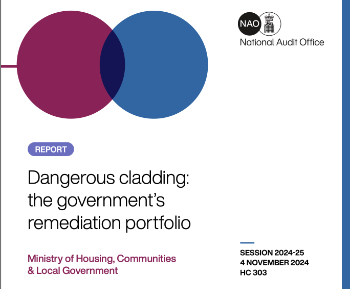Contracts under seal v under hand
Contents |
[edit] Introduction
Contracts may be executed under seal (signed by the parties, witnessed and most importantly made clear that it is executed as a deed - see below) or under hand (a 'simple contract' that is just signed by the parties).
[edit] Consideration and limitation periods
There are two important differences between simple contracts, and contracts that are under seal (deeds):
Firstly, simple contracts and contracts under seal have different limitation periods. An action founded on a simple contract cannot be brought after six years from the date on which the cause of the action accrued. The limitation period for a contract under seal is 12 years.
Secondly, unlike a simple contract, a contract under seal does not have to be supported by valuable consideration.
For example, where a collateral warranty consists of unilateral undertakings by one party, the contract must be a contract under seal if it is to be enforceable. It is important to note that whilst consideration is not necessary for a contract under seal in the absence of valuable consideration and, arguably, in the absence of something more than mere nominal consideration, the remedy of specific performance will not be available in respect of the contractual undertakings (see Milroy v Lord).
Specific performance is an equitable remedy requiring the contract breaker to fulfil their contractual obligations, rather than awarding damages for breach. Equity does not assist a volunteer, hence the need for consideration. It is suggested that a deed, which relies on merely nominal consideration, could be rescued by the addition of a consideration, which consists of ‘the mutual undertakings’ of the parties to a deed.
[edit] Legislation
Much of the law relating to the execution of deeds was swept away on 31 July 1990 by the Law of Property (Miscellaneous Provisions) Act 1989 dealing with the execution of deeds by individuals, and by the Companies Act 1989 dealing with the execution of deeds by companies.
Section 1(3) of the Act provides that a deed must be signed by the person who is to be bound and the signature must be attested by a witness. If this procedure is not followed then the document will not be valid as a deed.
Section 1(2)(a) provides that a document shall not be a deed unless it is made clear on its face that it is intended to be a deed by the person making it. It follows that the document must be described as a deed and the attestation clause must include a statement that it is being executed as a deed. If such descriptive words are not included then the document will not be valid as a deed.
The Act does not abolish the old common law rule that to be effective a deed must be delivered by the person who is to be bound. Delivery does not mean the physical handing over of the document but the evincing of an intention, whether by words or conduct, that the party is to be bound. Such intention was satisfied prior to the Act by signature and it is submitted that signature will continue to satisfy the requirement of delivery.
Companies may still use their seals to execute a deed provided that this is in accordance with their Articles of Association. Section 130 of the Companies Act 1989 introducing a new section 36(a) to the Companies Act 1985 provides by sub-section 4 that if a document is signed by a director and the secretary of the company or by two directors of the company and is expressed (in whatever form of words) to be executed by the company it will have the same effect as if it had been executed under the common seal of the company, i.e. a deed.
Further, sub-section 5 provides that a document which makes it clear on its wording that it is intended to be a deed has the effect of a deed even though the specific requirements for execution dealt with in sub-section 4 above are not complied with. For example, a document that is described as a deed and is executed by one director of the company will operate as a deed. Extreme care must be taken to ensure, if it is intended only to create a simple contract, that a company giving a collateral warranty does not accidentally execute the document in such a manner as to give rise to a deed.
[edit] Related articles on Designing Buildings
- Articles of agreement.
- Breach of contract.
- Causes of construction disputes.
- Collateral warranties.
- Contract claims.
- Construction contract.
- ESignatures.
- Engrossment.
- Letter of award.
- Litigation.
- Technology and Construction Court.
- Title.
[edit] External references
Featured articles and news
Adapting to meet changing needs.
London Build: A festival of construction
Co-located with the London Build Fire & Security Expo.
Tasked with locating groups of 10,000 homes with opportunity.
Delivering radical reform in the UK energy market
What are the benefits, barriers and underlying principles.
Information Management Initiative IMI
Building sector-transforming capabilities in emerging technologies.
Recent study of UK households reveals chilling home truths
Poor insulation, EPC knowledge and lack of understanding as to what retrofit might offer.
Embodied Carbon in the Built Environment
Overview, regulations, detail calculations and much more.
Why the construction sector must embrace workplace mental health support
Let’s talk; more importantly now, than ever.
Refurbishment for net zero; the BSRIA white paper
The everyday practice of tackling energy efficiency, fabric first, ventilation, air quality, and occupant wellbeing.
Ensuring the trustworthiness of AI systems
A key growth area, including impacts for construction.
Foundations for the Future: A new model for social housing
To create a social housing pipeline, that reduces the need for continuous government funding.
Mutual Investment Models or MIMs
PPP or PFI, enhanced for public interest by the Welsh Government.
Stress Awareness Week ends but employer legal duties continue.
A call to follow the five Rs for the business and for the staff.
Key points and relevance to construction of meeting, due to reconvene.
Cladding remediation programmes, transparency and target date.
National Audit Office issue report on cladding remediation.























Comments
To start a discussion about this article, click 'Add a comment' above and add your thoughts to this discussion page.